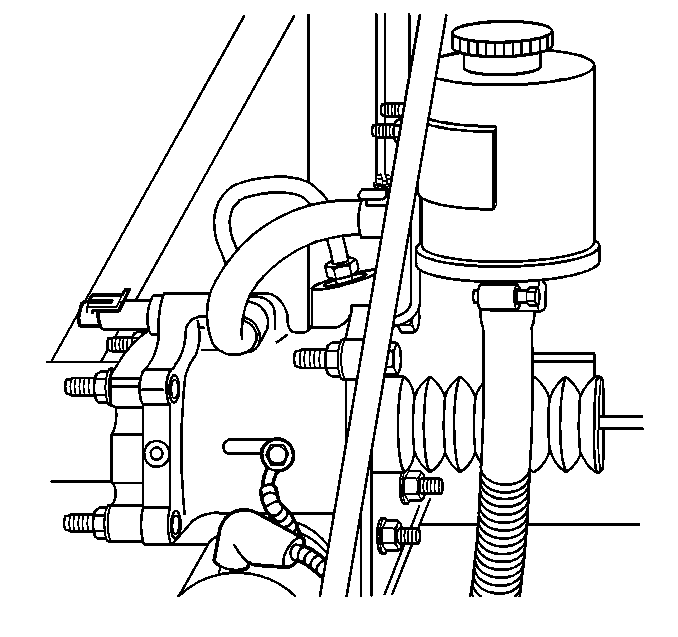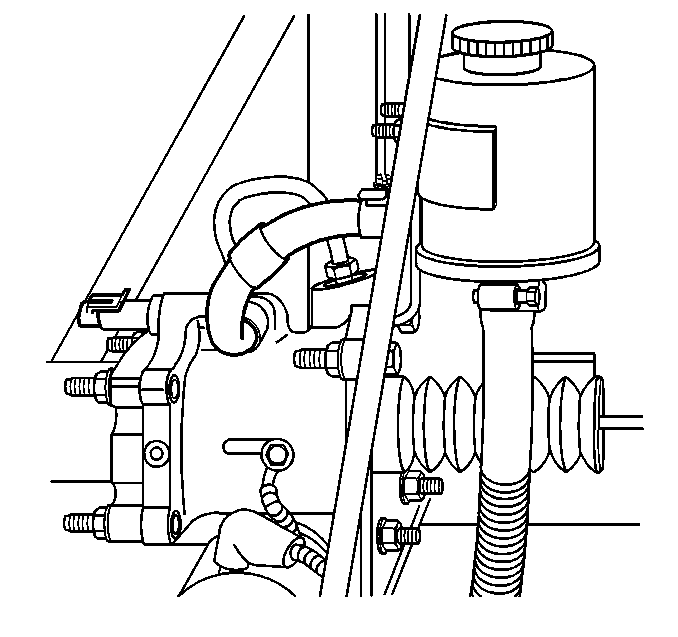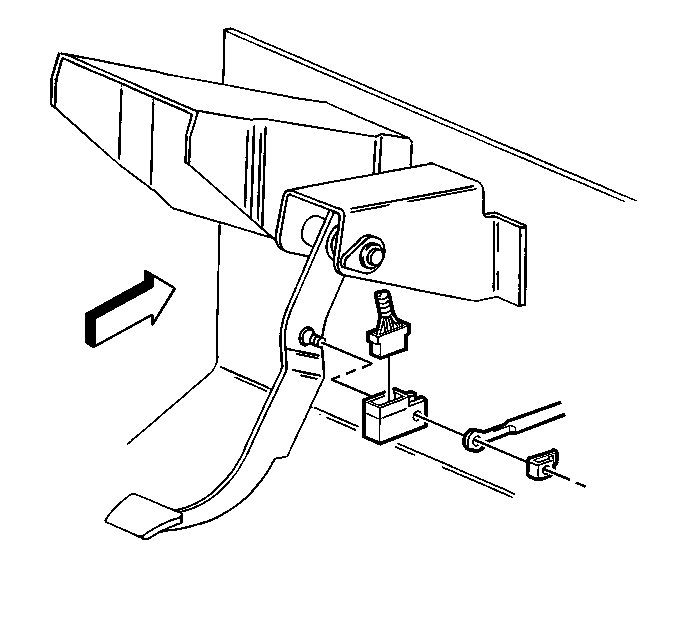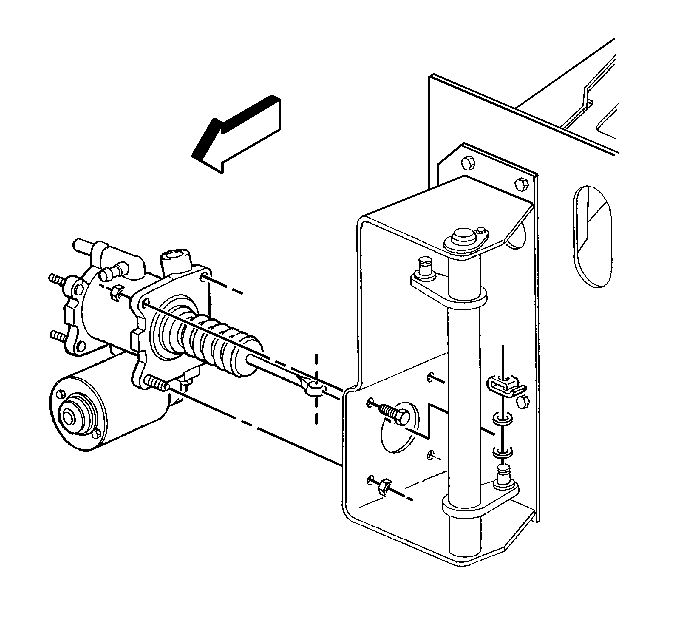Removal Procedure
Important: Power steering fluid and brake fluid cannot be mixed. If brake seals contact power steering fluid or if the steering seals contact brake fluid, seal damage will result.
Before proceeding with brake booster replacement , refer to Checking and Adding Power Steering Fluid , Power Steering System Bleeding , and Power Steering System Flushing . For power steering pump service, refer to Power Steering Pump Replacement .
- Block the vehicle wheels.
- Disconnect the negative battery cable.
- Disconnect the electrical connectors from the electrohydraulic (EH) pump and the flow switch.
- Remove the master cylinder. Refer to Master Cylinder Replacement .
- Position the master cylinder away from the booster head. Secure the master cylinder in an upright position.
- Disconnect the hoses from the booster.
- Use a suitable container in order to catch the fluid. Discard the old fluid.
- Cover or plug the hoses.
- Remove the following components from the brake support column lever:
- Remove the nuts at the booster.
- Remove the retainer, the washer, the seal, and the rod from the brake pedal lever assembly.
- Remove the booster assembly.

Caution: Unless directed otherwise, the ignition and start switch must be in the OFF or LOCK position, and all electrical loads must be OFF before servicing any electrical component. Disconnect the negative battery cable to prevent an electrical spark should a tool or equipment come in contact with an exposed electrical terminal. Failure to follow these precautions may result in personal injury and/or damage to the vehicle or its components.



| • | The retainer |
| • | The washers |
| • | The pushrod |

Installation Procedure
- Install the booster assembly.
- Install the booster rod to the support lever and the booster to the support with the mounting nuts.
- Install the following components to the brake support column lever:
- Install the hoses.
- Install the master cylinder. Refer to Master Cylinder Replacement .
- Install the electrical connectors to the electrohydraulic pump and the flow switch.
- Connect the negative battery cable.
- Fill the power steering reservoir. Refer to Approximate Fluid Capacities in Maintenance and Lubrication.
- Bleed the power steering system. Refer to Power Steering System Bleeding .
- Inspect for the proper brake operation.
- Remove the wheel blocks.

Notice: Use the correct fastener in the correct location. Replacement fasteners must be the correct part number for that application. Fasteners requiring replacement or fasteners requiring the use of thread locking compound or sealant are identified in the service procedure. Do not use paints, lubricants, or corrosion inhibitors on fasteners or fastener joint surfaces unless specified. These coatings affect fastener torque and joint clamping force and may damage the fastener. Use the correct tightening sequence and specifications when installing fasteners in order to avoid damage to parts and systems.
Tighten
Tighten the nuts to 29 N·m (21 lb ft).

| • | The pushrod |
| • | The washers |
| • | The retainer |


Caution: Unless directed otherwise, the ignition and start switch must be in the OFF or LOCK position, and all electrical loads must be OFF before servicing any electrical component. Disconnect the negative battery cable to prevent an electrical spark should a tool or equipment come in contact with an exposed electrical terminal. Failure to follow these precautions may result in personal injury and/or damage to the vehicle or its components.
